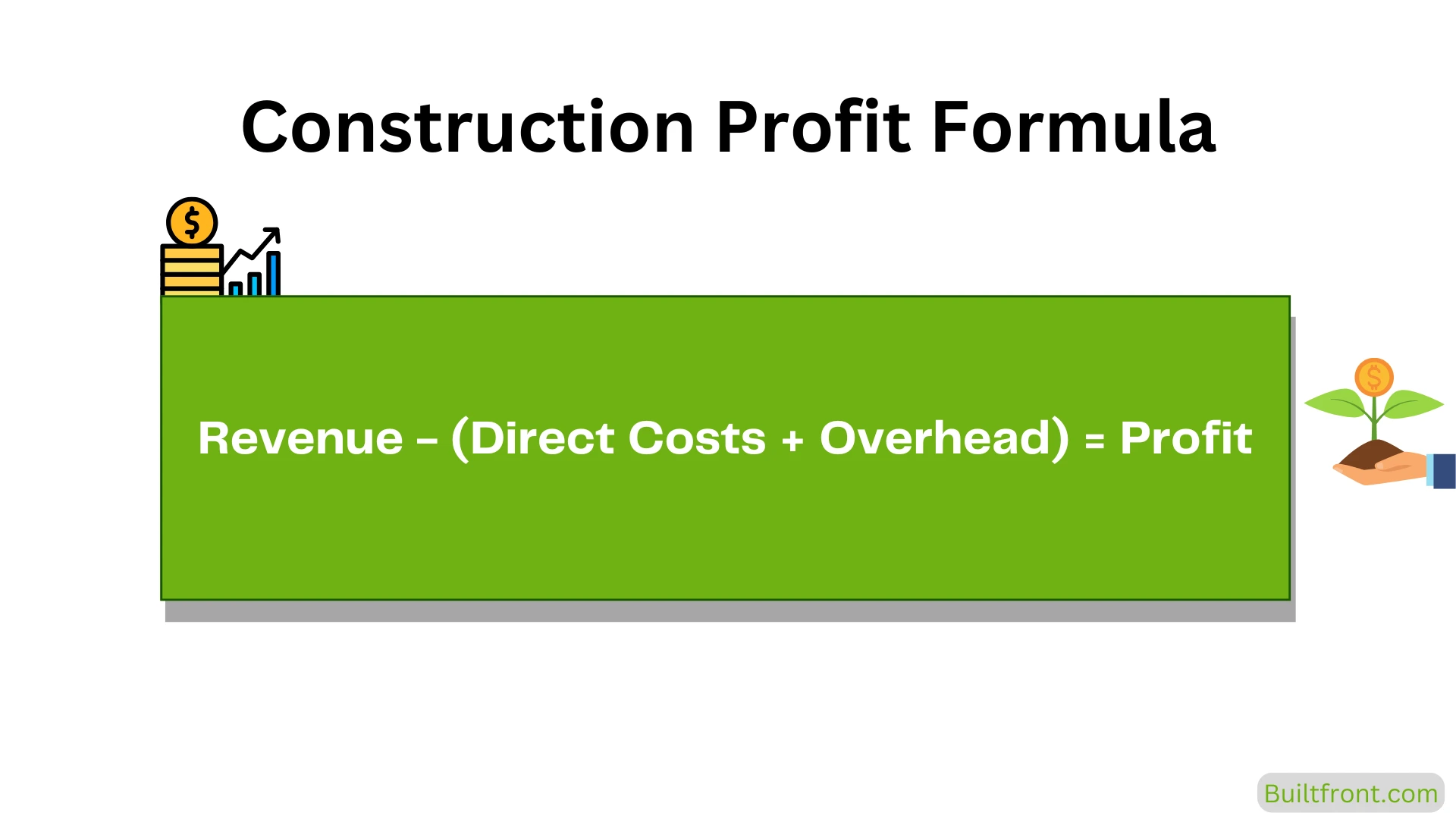Last Updated: April 2, 2025
Managing overhead costs while increasing profit margins is one of the biggest challenges construction contractors face today. If overhead gets out of control, even the most successful projects can fall short of their financial goals.
Today, we will provide you with actionable advice that is ideal for contractors or project owners to reduce overhead expenses and boost profitability. Whether you’re looking to refine your pricing strategy, uncover hidden costs, or streamline your operations, these tips will help you achieve long-term financial stability and growth.
Table of Contents
What is Overhead in Construction?
Overhead refers to indirect costs necessary to run a construction business. These expenses are not tied to a specific project but are essential for the day-to-day operations of your business.
Common Examples of Construction Overhead:
- Office Rent: Costs for office or storage spaces.
- Administrative Salaries: Wages for office staff, HR, and management not working directly on projects.
- Utilities: Monthly expenses like electricity, gas, water, and internet for the office.
- Insurance: Policies for liability, equipment, and worker’s compensation.
- Depreciation: Decline in value of tools, machinery, and vehicles over time.
- Maintenance: Repairs and upkeep for vehicles and equipment.
- Software: Subscriptions for construction management tools and other digital resources.
According to research by the U.S. Bureau of Labor Statistics, nonresidential building construction projects generally include an overhead markup of 10% to 20%, with profit margins varying based on project complexity and market conditions, highlighting the importance of effective cost management for financial success.
What is Profit in Construction?
Profit is the amount left after subtracting all costs, including overhead, from the revenue generated by a project. It’s what makes a business sustainable and allows for reinvestment and growth.
Example: Imagine a project generates $500,000 in revenue. After deducting $400,000 in direct costs and $50,000 in overhead, the profit is $50,000.
Many contractors confuse profit with markup. While markup includes overhead and a profit margin, profit is what remains after all costs are deducted.

Learn more: General Contractor Markup: How Much Should You Really Charge?
7 Tips to Reduce Overhead and Increase Profit
Your company’s growth should be about more than just taking on bigger projects. It’s also about increasing your profits. By cutting overhead costs and boosting your profit margins, you can improve your bottom line. Here are some easy-to-follow tips to help you do just that.
1. Strategically Raise Your Profit Margins
Review your current profit margins and look for opportunities to increase them incrementally. For example, if your current margin is 8%, aim for 10% over the next six months. Small adjustments can make a significant difference over time.
- For Existing Clients: Communicate upcoming changes well in advance to maintain trust.
- For New Clients: Immediately implement the new rates to align with your financial goals.
2. Conduct a Full Cost Analysis
Unexpected costs often reduce profit margins, making a full cost analysis essential. By auditing your expenses regularly, you can uncover hidden or overlooked costs, such as incomplete project estimates or underestimated indirect expenses. For example, you can break down project expenses into direct costs like materials and labor, and indirect costs such as overhead.
If a bid assumed 5% overhead but actual costs are closer to 10%, this discrepancy can erode profitability. Adjusting future calculations based on such findings ensures more accurate pricing, better project planning, and improved overall profitability. Being proactive in identifying these missed costs will safeguard your margins.
3. Use Construction Management Software
To effectively reduce overhead, consider automating and optimizing key areas of your business operations. Construction management software offers solutions to streamline processes like invoicing, payroll, and project tracking, helping your team work smarter, not harder.
By adopting construction-specific tools, you can benefit from features like centralized document storage for blueprints and contracts, automated compliance tracking, and real-time scheduling updates. These tools minimize the time spent on repetitive tasks and reduce administrative strain, allowing your staff to focus on high-value responsibilities.
The result? A more efficient workflow and noticeable savings in both time and money.
4. Tighten Your Accounts Receivable Policies
To secure your profit margin, it’s essential to have a strong accounts receivable policy in place. This ensures that your payments are collected efficiently and your cash flow remains stable.
When creating your policy, keep these important factors in mind:
- What steps will you take to follow up on overdue payments, and how soon?
- Should you offer rewards for early payments, like small discounts or other incentives?
- At what stage will you escalate unpaid invoices—will you send reminders, hire a collection agency, or take legal action?
- Are your policies designed to protect your legal rights, such as the ability to file a mechanics lien if needed?
5. Strengthen Vendor and Supplier Partnerships
Building solid relationships with suppliers and subcontractors can significantly reduce costs and improve your efficiency. Reliable partnerships foster trust, making it easier to negotiate better payment terms, secure bulk discounts, and gain priority service during busy periods or material shortages.
Paying invoices on time demonstrates your reliability and can help you avoid late fees while unlocking early payment discounts. Suppliers are often more willing to offer flexible terms to loyal and dependable customers, which can positively impact your bottom line.
Over time, nurturing these relationships creates a dependable supplier network, giving your business a competitive advantage with cost savings, consistent service, and fewer disruptions to your projects.
6. Reduce High-Interest Financial Commitments
High-interest loans and credit agreements can slowly reduce your profits. Take time to look over all your financial commitments, like credit card rates, lines of credit, and supplier financing, to find ways to lower interest costs.
You could consolidate multiple loans into one with a lower interest rate. Another option is to contact your credit card provider and ask for a lower rate or switch to a card with better terms. Using business credit cards that offer rewards, like cashback or travel points, can also help with everyday expenses.
By managing your debt and interest payments wisely, you can save money and use those savings to grow your business, whether it’s through new equipment, marketing, or employee development.
7. Boost Labor Productivity and Efficiency
Labor inefficiencies directly impact costs and project timelines. To maximize labor productivity, consider:
- Cross-training Employees: Workers with versatile skills can step in where needed, ensuring smooth project flow.
- Scheduling Software: Eliminate overlaps and wasted time by planning crew assignments carefully.
- Regular Performance Reviews: Identify and address inefficiencies early on to keep projects on track.
Improved labor efficiency leads to lower costs, faster project completion, and greater profitability.
Related: 12 Proven Ways to Reduce Construction Costs Without Sacrificing Quality
Building Financial Success Through Better Planning
Managing overhead and profit isn’t just about math, it’s about having a strategic approach to managing your business. Successful contractors understand that careful planning and regular evaluation are vital to financial stability.
By taking steps to control your overhead, protect your profit margins, and reinvest in smarter strategies, you can ensure your business is always moving forward.
Ready to elevate your business operations and maximize profitability? Builtfront offers cutting-edge tools designed specifically for you construction professionals. Sign up for a free trial today and discover how Builtfront can transform your business.
FAQs About Overhead and Profit in Construction
What is typical overhead and profit in construction?
Most construction businesses aim for an overhead percentage of 10-20%.
How can I calculate my profit margin?
Subtract total costs (direct and overhead) from revenue, then divide by revenue and multiply by 100.
What tools can help manage overhead effectively?
Construction-specific software like Builtfront simplifies overhead tracking and optimization.

